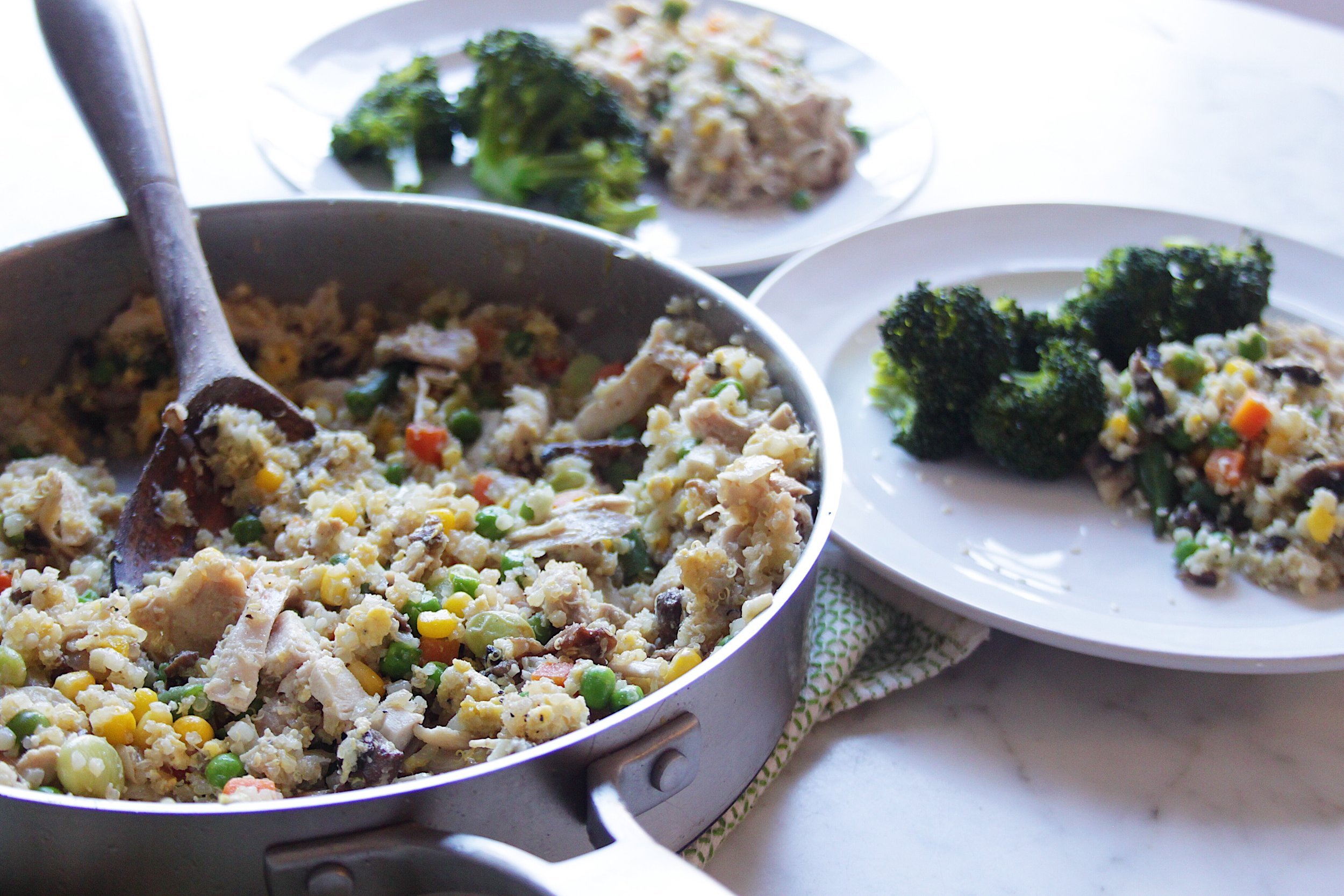Cauliflower Rice + Quinoa Chicken Friend Rice
My husband is always begging me to make chicken fried rice. I wanted to try to make a healthier version, without all the extra post-meal guilt and calories and I also wanted to boost the nutritional value a bit.
I decided to swap out the white rice for a mixture of cauliflower rice and quinoa and let me tell you, this turned out SO good. In fact, I have made it three times since and it’s been polished off completely by the family each time.
While I like the taste of frozen veggie mixtures in fried rice, they aren’t exactly through the roof on the nutritional charts, you guys. So adding cauliflower and broccoli made it a complete meal for us and truthfully, I didn’t really miss the “real deal” one bit.
While the adults in the house enjoy casseroles and other mixtures such as this, my little guy sometimes has a hard time with them. That doesn’t mean I just stop offering them completely.
HERE ARE A FEW TIPS WHEN OFFERING A MEAL SUCH AS THIS TO YOUR KIDDOS:
If you’re offering a casserole or something like this dish with lots of different foods and textures mixed together, try offering a “no thank you” plate where they can remove the items they have tried and don’t like. This helps them feel more in control of what’s going into their bodies and helps not feel threaten or afraid to try. (My son basically removed all the mushrooms before he was even willing to try a bite)
You can also deconstruct the meal a bit by placing veggies in one tray, chicken and eggs in another. OR you can place the child’s preferred foods on top so that it’s the first thing they 👀 see. (I arranged the chicken on the top, since my son loves chicken)
REMEMBER, between the ages of 2 1/2 - 4 years old (but ESPECIALLY at the age of 3) ALL kids go through a “picky eating phase” and this is considered C O M P L E T E L Y N O R M A L.
Try to talk them THROUGH the meal instead of talking them INTO the meal. Talk about all the sensory components of the foods like textures, colors and shapes of different veggies (how they look, feel and taste).
Allow THEM to decide what kinds of foods they like and don’t like but never stop offering a certain foods just because your child initially rejected it (it can take around 15 exposures before a new food is accepted, yes 15!)
It’s hard, you’re doing a great job, way better than you think!!
So if you’re like me and craving take-out style chicken fried rice but also trying to offer a nutritional family meal, give it a try and let me know what you think you guys!
INGREDIENTS:
1 1/2 cup organic frozen vegetable mixture
1 1/2 cup organic cauliflower rice
1/2 cup quinoa (cooked)
4-5 chicken thighs
2 eggs
1 1/2 tsp sesame oil
2 tsp coconut aminos
1 1/2 tsp grassfed butter or ghee
1 medium yellow onion, diced
2 cloves garlic, diced
1 pack sliced mushrooms, roughly chopped
1 tsp onion powder
sesame seeds
salt and pepper to taste
coconut oil or EVOO
INSTRUCTIONS:
First, cook the chicken. I boiled some water and added the thighs, lowered the heat a bit and cooked them for about 15 or until cooked through.
Next dice the onion, garlic and roughly chop the mushrooms.
Add butter or ghee to pan on medium high heat and sauté the onions, garlic and mushrooms (add onions and garlic first, once they’re soft add the mushrooms)
Next, add mixed veggies and stir for about 5 minutes.
Add additional coconut oil or ghee to pan.
Add the cauliflower rice, quinoa, sesame oil and coconut aminos (or soy sauce) and cook on medium heat for about 5 minutes.
Make an open spot in the pan to scramble the eggs and mix into the mixture.
Fork shred the chicken and add to pan.
Add onion powder and s + p to taste.
Serve with broccoli and sesame seeds. Enjoy!


